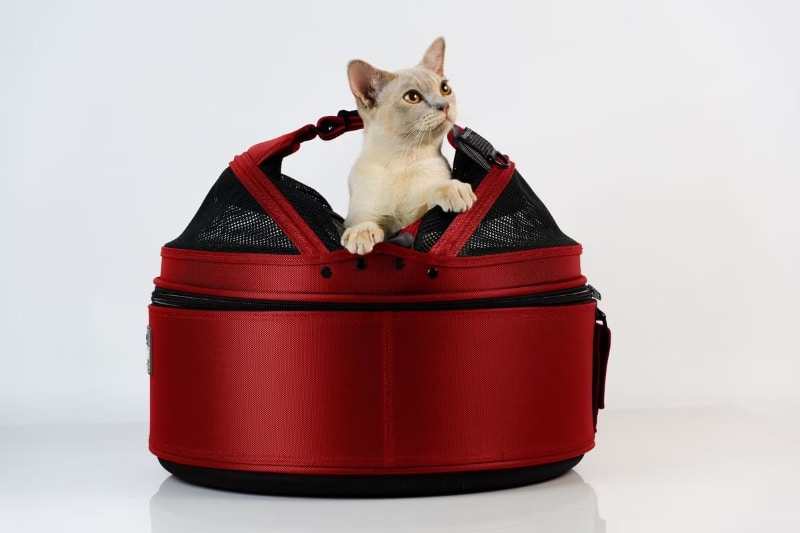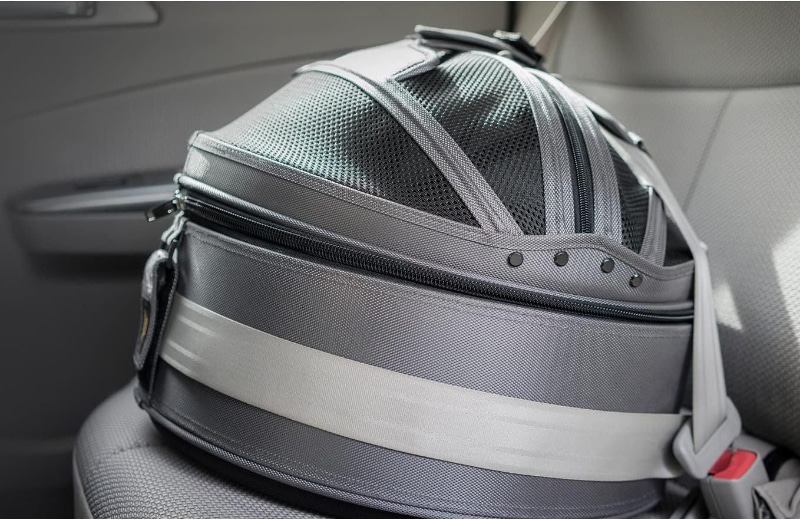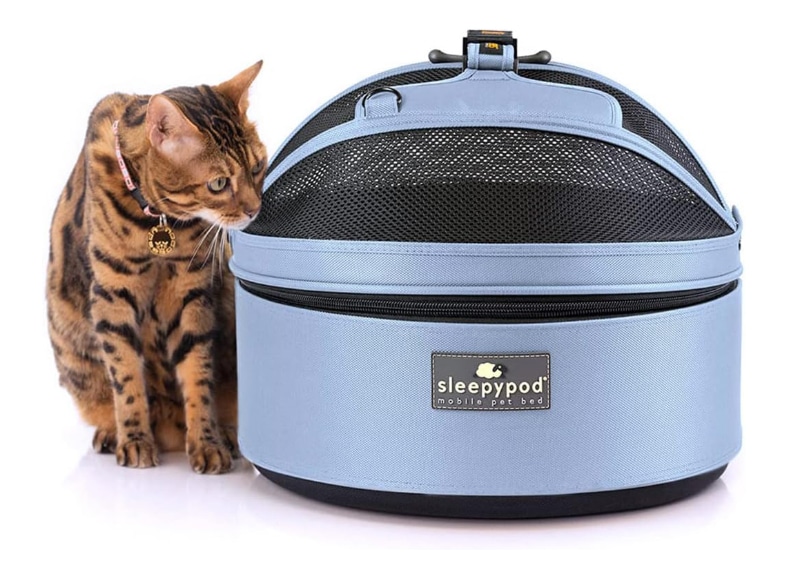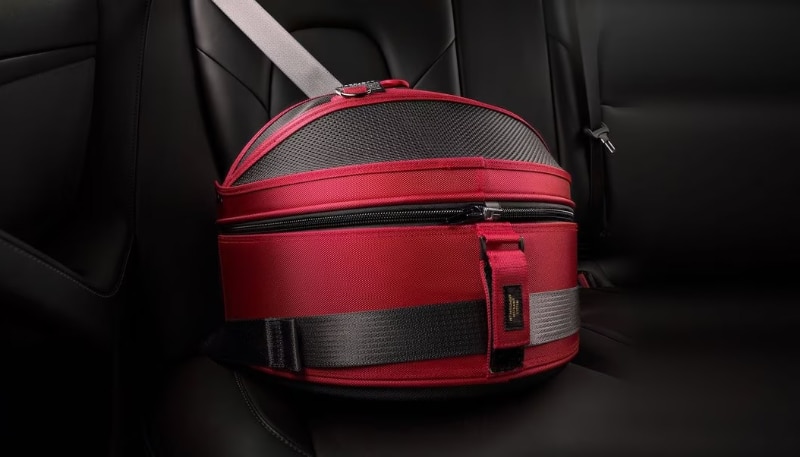Click to Skip Ahead
We give Sleepypod Mobile Pet Bed a rating of 4.3 out of 5 stars.
If you need a pet carrier and a pet bed in one, the Sleepypod can be your perfect all-in-one solution for smaller pets. With a maximum weight capacity of 15 pounds, it can work for smaller dogs, but there’s no doubt that it’s usually a better fit for cats.
This mobile pet bed comes with tons of advanced safety features for car travel, it reduces anxiety for your pet while traveling, and it’s beyond comfortable for them. The only real drawback is the price, but if you’re already looking at getting both a pet bed and a carrier, you’re not going to find a better quality product or deal than this.
Sleepypod doesn’t cut corners regarding quality and safety, ensuring your pet gets the best of the best when they’re on the move!
Sleepypod Mobile Pet Bed – A Quick Look

- Very high quality
- Pet bed/mobile carrier combo
- Comfortable for pets
- Doubles as a car seat
- Lots of color options available
- Easy to clean
- Expensive
- Maximum pet weight of 15 pounds
Specifications
| Brand name: | Sleepypod |
| Height: | 13.5 inches |
| Diameter: | 17 inches |
| Product weight: | 4.5 pounds |
| Maximum pet weight: | 15 pounds |
| Construction material: | Nylon, mesh, and plush |
| Machine washable?: | Yes |
Pet Bed/Carrier Combo
There’s no doubt the primary selling point of the Sleepypod is the fact that it’s a pet bed and pet carrier all in one product. Not only does this reduce the amount of material products you need, but it also allows your pet to get comfortable with their pet carrier so that they aren’t trying to hide every time you need to leave the house with them. It already has their scent, they’re comfortable in it, and they don’t have to think twice about crawling into it!

Premium Car Safety Features
You put on a seatbelt every time you get into a vehicle, and your pet deserves that same level of protection. The Sleepypod uses a tether system to help keep them locked in during sudden braking events.
In addition, using PPRS technology helps prevent pets from ejecting during a sudden stop event and reduces the number of potentially damaging forces impacting your pet.
Finally, the Sleepypod undergoes rigorous safety testing and meets U.S., Canadian, and E.U. child safety standards.
High Quality & Durable
Nobody wants to deal with a product falling apart after a few weeks of use. The Sleepypod uses the highest quality materials so that it lasts, and since your pet gets used to it as a regular bed, they’re less likely to tear it apart when you use it as a carrier by trying to paw their way out.

The Price Factor
There’s no denying that the Sleepypod is the Porsche of pet carriers. But just like a real Porsche, the Sleepypod isn’t a low-cost option. It comes with a hefty price tag, but the tradeoff is that you’re getting a high-quality, durable, and multi-functional product you can use for years to come.
When you compare a Sleepypod’s cost to a pet bed and a conventional pet carrier, you’re getting a great deal, even if you need to spend a little more on a single product.
Recall History
There are no recalls on this product, and Sleepypod’s entire Pet Travel Carrier line has passed the Center for Pet Safety Certification Testing.
Frequently Asked Questions
How Do You Clean a Sleepypod?
The Sleepypod is easy to clean. Wipe the carrier in the direction of the fabric to remove any exterior dirt by using a damp cloth when necessary. Even better, the interior plush is removable and machine washable.
What Is the PPRS Handilock?
The PPRS handilock is an additional safety feature in the Sleepypod that helps in the case of sudden stop events while in a vehicle.
What Do You Get When You Order a Sleepypod?
Every Sleepypod comes with ultra-plush bedding, a foam insert, a shoulder strap, PPRS handilock, a safety tether, the Sleepypod itself, and an instruction manual. Everything you need comes with the initial package, making the price a little more justifiable.

What the Users Say
Every manufacturer says their product is the best, and we all know that isn’t always the case. That’s why it’s important to track down what actual users of the product have to say.
Users love all the extra features the Sleepypod comes with, specifically noting how portable and adorable it is. They also appreciate all the extra safety features it comes with.
And while most users say it’s worth the higher price tag, some people would prefer to save a few bucks by going with something else. Not only that, but the zipper can be a bit challenging to deal with, and if you don’t store it properly, it can quickly wind up damaged. But all in all, it seems that this product is a real winner for the average consumer.
Conclusion
While the Sleepypod isn’t the best fit for everyone, there’s no doubt that it’s a great deal and an adorable pet bed and mobile carrier. With tons of color options to pick from and premium comfort features, it’s the ideal way to meet your needs and reduce your pet’s stress levels when they need to travel.
You’ll need to spend a little more upfront to get one, but with the quality and durability of the Sleepypod, they’re worth every penny.











